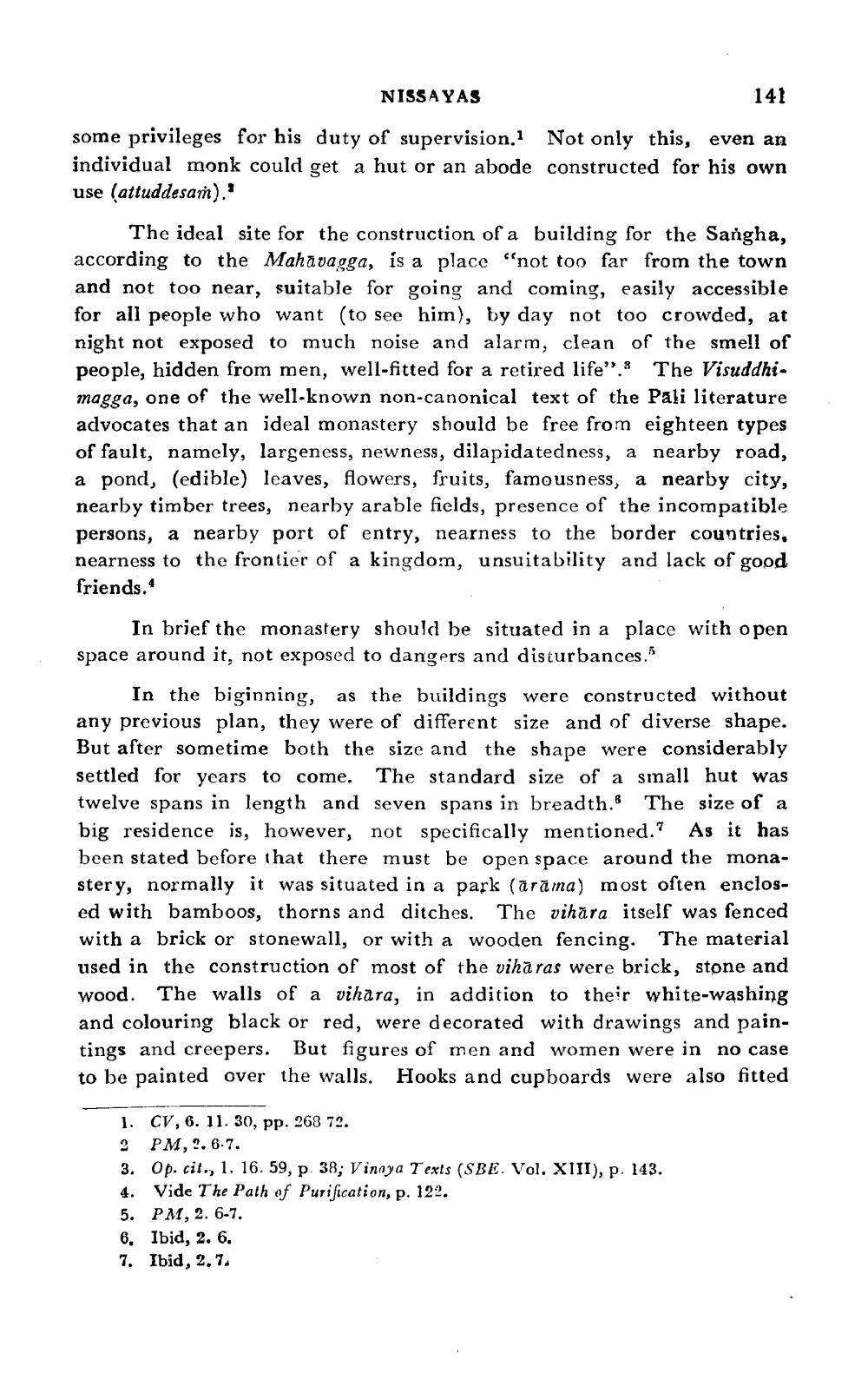________________
NISSAYAS
141
some privileges for his duty of supervision. Not only this, even an individual monk could get a hut or an abode constructed for his own use (attuddesan)."
The ideal site for the construction of a building for the Sangha, according to the Mahavagga, is a place not too far from the town and not too near, suitable for going and coming, easily accessible for all people who want to see him), by day not too crowded, at night not exposed to much noise and alarm, clean of the smell of people, hidden from men, well-fitted for a retired life". The Visuddhi. magga, one of the well-known non-canonical text of the Pali literature
dvocates that an ideal monastery should be free from eighteen types of fault, namely, largeness, newness, dilapidatedness, a nearby road, a pond, (edible) leaves, flowers, fruits, famousness, a nearby city, nearby timber trees, nearby arable fields, presence of the incompatible persons, a nearby port of entry, nearness to the border countries, nearness to the frontier of a kingdom, unsuitability and lack of good friends."
In brief the monastery should be situated in a place with open space around it, not exposed to dangers and disturbances.
In the biginning, as the buildings were constructed without any previous plan, they were of different size and of diverse shape. But after sometime both the size and the shape were considerably settled for years to come. The standard size of a small hut was twelve spans in length and seven spans in breadth. The size of a big residence is, however, not specifically mentioned.? As it has been stated before that there must be open space around the monastery, normally it was situated in a park (ärāma) most often enclosed with bamboos, thorns and ditches. The vihāra itself was fenced with a brick or stonewall, or with a wooden fencing. The material used in the construction of most of the vihāras were brick, stone and wood. The walls of a vihara, in addition to their white-washing and colouring black or red, were decorated with drawings and paintings and creepers. But figures of men and women were in no case to be painted over the walls. Hooks and cupboards were also fitted
1. CV, 6. 11. 30, pp. 268 72. 2 PM,!.6.7. 3. Op. cit., 1. 16. 59, p. 38; Vinaya Texts (SBE. Vol. XIII), p. 143. 4. Vide The Path of Purification, p. 122. 5. PM, 2. 6-7. 6. Ibid, 2. 6. 7. Ibid, 2.7.




